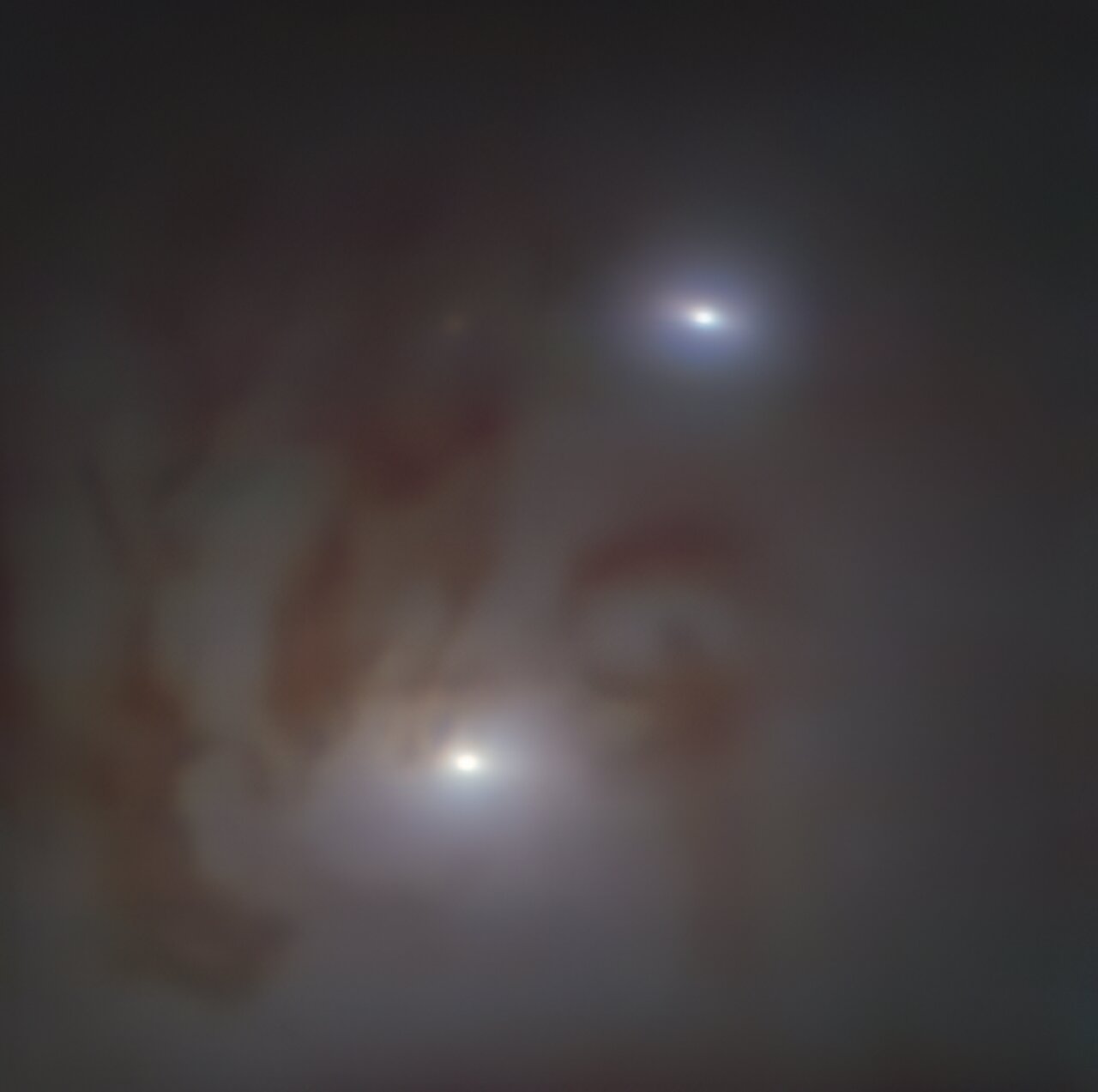Black holes on a collision course
Do you already have something planned for the year 250,002,000? Then take an evening off and look with your future super telescopic eye at the area around the galaxy NGC 7727 in the constellation Aquarius. There, two super heavy black holes are colliding with each other. Today, they are still 1600 light-years apart, but they are the closest pair of black holes observed so far.
Astronomers found it with the help of the European Southern Observatory’s VLT. “It is the first time we have found two supermassive black holes so close together, less than half the distance of the previous record holder,” said Karina Voggel, an astronomer at the Strasbourg Observatory in France and lead author of the study, published in Astronomy & Astrophysics. “The close distance and velocity of the two black holes suggest that they will merge into a monster hole,” adds co-author Holger Baumgardt, a professor at the University of Queensland, Australia.
Voggel and her team were able to determine the masses of the two objects by studying how the gravitational pull of the black holes affects the motion of stars around them. The larger black hole, located just inside the core of NGC 7727, has a mass nearly 154 million times that of the Sun, while its companion has a mass of 6.3 million solar masses. This is the first time that the masses of a pair of supermassive holes have been measured in this way. The achievement was made possible by the system’s proximity to Earth (from which it is only 89 million light-years away) and the detailed observations the team made at the Paranal Observatory in Chile using the Multi-Unit Spectroscopic Explorer (MUSE) at ESO’s VLT.
Astronomers already suspected that the galaxy harbors the two black holes, but have been unable to confirm their presence because of the lack of large amounts of high-energy radiation emanating from their immediate vicinity that would otherwise give them away. “Our discovery suggests that there may be many more such relics of galaxy mergers, and that they may contain many hidden massive black holes still waiting to be found,” Voggel says. “This could increase the total number of known supermassive black holes in the local universe by 30 percent.”

